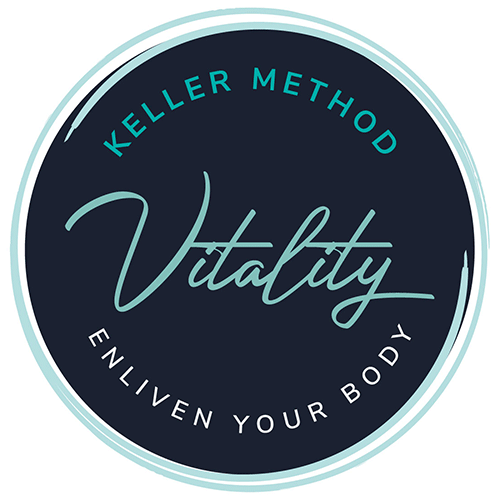
Kathleen Keller performs Keller Method poses: 1: Standing hip stretch. 2: Inverted release. 3. Pilates extension. 4: Foot release with a therapeutic ball. 5: Proper posture pose. 6: Lateral release with a therapeutic ball. 7: Suboccipital release with a therapeutic ball. 8: Swimming pose.
BY CHRISTINA FRANGOU, FOR THE CALGARY HERALD JULY 15, 2010
Sure, you hate airports. But Kathleen Keller hates watching you hate airports.
“When I sit in airports, it hurts me to see people go by, unhappy, with their shoulders slumped like this,” says the pint-sized Pilates instructor, curling her shoulders inward and hunching forward.
You might not have heard of her, but this Calgary-based therapist is known around the world for improving other people’s posture.
Need proof? Check out the April 2005 edition of Australasian Harper’s Bazaar. It ran an article on Keller, complete with a photo. “On the same page as Gwyneth Paltrow and Madonna,” Keller says with a laugh as she flips through her portfolio in a Springbank Hill cafe.
Her personal clients have included everyone from Malaysian royalty and professional hockey players to Calgary moms and Indonesian stabbing victims.
Today, Keller runs a clinical Pilates practice at LifeMark Physiotherapy Clinic and teaches training courses for other health professionals.
She is known for her own eponymous method, a combination of Pilates and therapeutic ball massage that releases tension in the connective tissues surrounding muscles. The former competitive gymnast has trained more than 1,000 physiotherapists, massage therapists and chiropractors in Western Canada in the Keller Method.
Not too shabby for a woman who started off teaching disco dance to bell-bottom-wearing Vancouverites in the 1970s.
Now 51, Keller has spent most of her life studying movement of the human body. After specializing in kinesiology at university, she worked as a fitness instructor. She taught every “it” workout of the 1980s and 1990s — from Jane Fonda aerobics to jazz dance. She tried Pilates in 1997 and fell in love.
“Pilates was it for me.”
Pilates — a system of measured movement matched with breath control — focuses on strengthening the torso muscles, boosting support for the spine and improving flexibility and posture. The movements helped Keller get rid of pain she felt from years of walking with a dancer’s arched back.
Pilates also changed the trajectory of Keller’s life. In 2001, she was teaching at a busy studio in Vancouver when one of her students made her an incredible offer. Jane Hint Husainy Abdullah, the daughter-in-law of a former prime minister of Malaysia, invited Keller to Kuala Lumpur to open the country’s first Pilates studio.
“I said, ‘sure, why not?’ It sounded like an adventure.”
Off she went, trading her small Vancouver apartment for a posh apartment with a maid and a driver. She was treated like a minor celebrity. She flew around Asia and as far away as London to teach. She once taught a private course in a palace to Muslim women physiotherapists. “It’s very hard to teach to women wearing tudongs (a Malaysian head scarf), because you can’t see their necks; you can’t see their bodies,” she notes.
She worked long hours, often staying at the studio writing training manuals until midnight. Her main task was to train young women, most of whom spoke poor English and had never heard of Pilates, to be Pilates instructors.
“Can you imagine teaching people how to ski when they have never seen or heard of skiing? That’s what it was like,” she says.
Many of her students came from impoverished families. “They would literally get up at three in the morning to start the commute to be at training by 9 a.m.,” Keller says.
As Keller trained others, she developed her own style, mixing Pilates, massage techniques using therapeutic balls and Feldenkrais techniques, a body-awareness therapy.
Her method is based on “anatomy trains,” or muscle pathways running through the body.
Imagine each pathway is a chain of sausages; our muscles are the meaty bulges, encased and linked by myofascial tissue. Tightness somewhere in the chain can create problems elsewhere in the line.
“What you feel in your leg might start somewhere in the back,” Keller says.
She moved back to Calgary in 2007 because she missed her family and had tired of the long hours and oddball lifestyle. Giant cockroaches, endless poverty and crime — she ended up in hospital after a motorcycle bandit tried to wrest her purse — were things she just couldn’t get used to.
It’s been Calgary’s gain. Janet Pritchard, a 48-year-old Calgary mother of two who competes in Ironman competitions, sought out Keller three years ago to strengthen her body for intense training. “It’s completely changed the way I move my body,” she says. The treatments improved her core strength, and helped her to change her running gait and keep her loose after long runs.
As for the rest of us? Keller suggests we pay attention to posture, and not just at airports (hint: don’t overcorrect by arching your back, but settle into your spine’s natural curve).
© Copyright (c) The Calgary Herald
